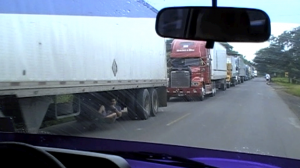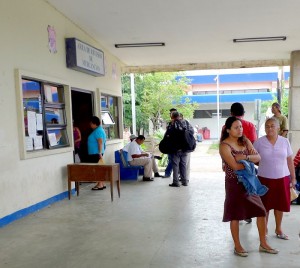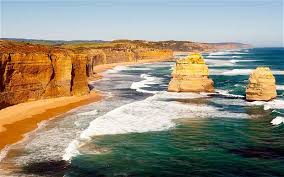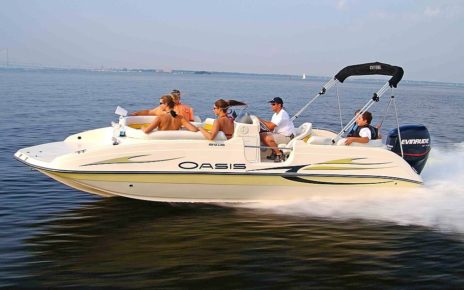The following is a guest post by Brian Richter, a 20-year veteran of the restaurant industry who now resides in Central America assisting travelers and local businesses alike. He helps foster customer relationships between travelers and businesses prior to, during and after trips to Central America and Colombia with his site whereintheworldareyou.com.

Crossing the border (frontera) from one country to another in Central America is relatively easy except going into Costa Rica. You can pretty much drive the PanAmericana Highway all the way from Guatemala to Costa Rica without going through long border crossings, but Costa Rica did not want to participate in this convenience. They decided if you plan on traveling by road into Costa Rica, you needed another adventure.
The usual border crossing is fairly smooth but depending on the semi-truck traffic and depending on the time of year (i.e. Christmas, and Easter) it could take up to 2 hours plus to cross the border — sometimes more if you are driving your vehicle across. It becomes more complicated if you plan on taking another person’s vehicle. You really do not want to do that if at all possible.
The list below is predominantly for those who drive their vehicle. If you are not driving, just ignore those items pertaining to vehicles.
Items required:
- a couple of pens in case one gives up on you
- valid passport with current stamps
- valid exit visa stamp if you are a resident of Nicaragua but not a citizen
- valid exit documentation for your Nicaraguan vehicle should you be driving. This can take at least a half a day to 2 days depending on your luck with the local officials. This is obtained from the local Policia in the town where your vehicle is registered.
- valid vehicle registration card – circulation
- proof of insurance for your vehicle
- cedula – should you be a residence
- valid drivers license
- 3 photocopies of your passport (main page), vehicle registration, insurance certificate, exit visa for your vehicle, cedula, (include front and back side of all documents that have printing or stamps)
- patience – generally more then usual
- plenty of small denomination bills – Cordobas or dollars (US) on the Nicaraguan side and Calones or dollars (US) on the Costa Rica side. Contrary to popular belief you can quite often get a better exchange rate from the exchange coyotes then from the banks. But you have to know the exchange rates.
Here comes the first charge. For four people crossing the border with a vehicle it will cost 80 cordobas (about $4.00) This is tax for the local town and is based upon number of people in vehicle.
Once you have paid for the entrance into the border you must go to the offices where you obtain a free customs form. This is in the building where you see all of the buses lined up in the center. This is where you will register where you are from, where you have been and where you are going. Make sure you have your passport out and are ready to fill the proper information out (most times the forms are in both English and Spanish).
Once you have the forms filled out you must stand in line…did I mention patience?
The migration officials will stamp your passport and send you on your merry way. The cost for a non-resident $5. This can change at any time.
If you are traveling with your own vehicle you must also go to another office on the Nicaragua side. Here you will obtain an inspection paper from the local inspector; then if you are lucky and the Policia are close by, you have them sign off on the inspection.

With the vehicle inspection form signed off by both the inspector and Policia, you then get to stand in line to have the migration officer check for:
1. Proper registration
2. Insurance
3. Exit papers for your vehicle
4. Driver’s license
Once they approve then you go to the next line to wait and have the Policia check for the same items. Once all is approved you are then given a vehicle exit ticket to present and the migration exit post, which is the next stop.
Hand your exit ticket to the official at the exit post and proceed to the fumigation office. It will cost you 80 Cordobas (approx. $4.00); this is for the spraying of your vehicle to disinfect it before going into Costa Rica.
Next, you drive to the Costa Rican border buildings and have them stamp your passport for the entry into their country. This shouldn’t take long at all unless there are buses full of people, in which it could take up to one hour.
If you have a vehicle, after this you must stop at the Insurance Office (just down the hall from where you just had your passport stamped) and get insurance for your vehicle for the length of time you are going to be in Costa Rica. Depending on the length of time you are going to be is dependent on the amount charged. Generally six months costs approximately $16-$18. This has to be paid in Calones (7900 colones approx.).
Plus, don’t forget to get a photocopy of your passport with the insurance certificate (cost: 100 colones) prior to going to get your vehicle inspected. This is in the same office where you get your insurance. Because they require the current passport stamp, you have to get your photocopy here.
Over to the vehicle inspection office. Here you fill out another form listing where you are from, where you are going, the make of your vehicle, license number, etc. This form is in Spanish. You need photocopies of:
- the photocopies you just made at the insurance office
- your vehicle registration
- drivers license
- vehicle exit visa

After reviewing the forms and recording them, the inspector will inspect your vehicle and sign off, again giving you another validated form to go to the next stop, the Departmento de Hacienda. Here you will need
- the inspection form you just received
- your passport
- driver’s license
- vehicle registration
- insurance
- vehicle exit visa
- photocopies of your passport
After recording the information they need plus noting how long you are going to be in Costa Rica, you are free to continue on your journey.
It is always better to have more photocopies than you may need, as you can always use them at another border. The border crossings do not always have a photocopier available and if they do it will just cost you more money than you expected.
Make sure that you do NOT put your papers and passport away. Ensure they are easily accessible, as you may need them once or twice on the road to show the Costa Rican Police that you have a valid passport and that you have actually crossed the border legally. This also happens when you ride the buses.
Guess what? When you return you get to repeat the process in reverse with the exception of buying insurance. Aren’t you lucky!




